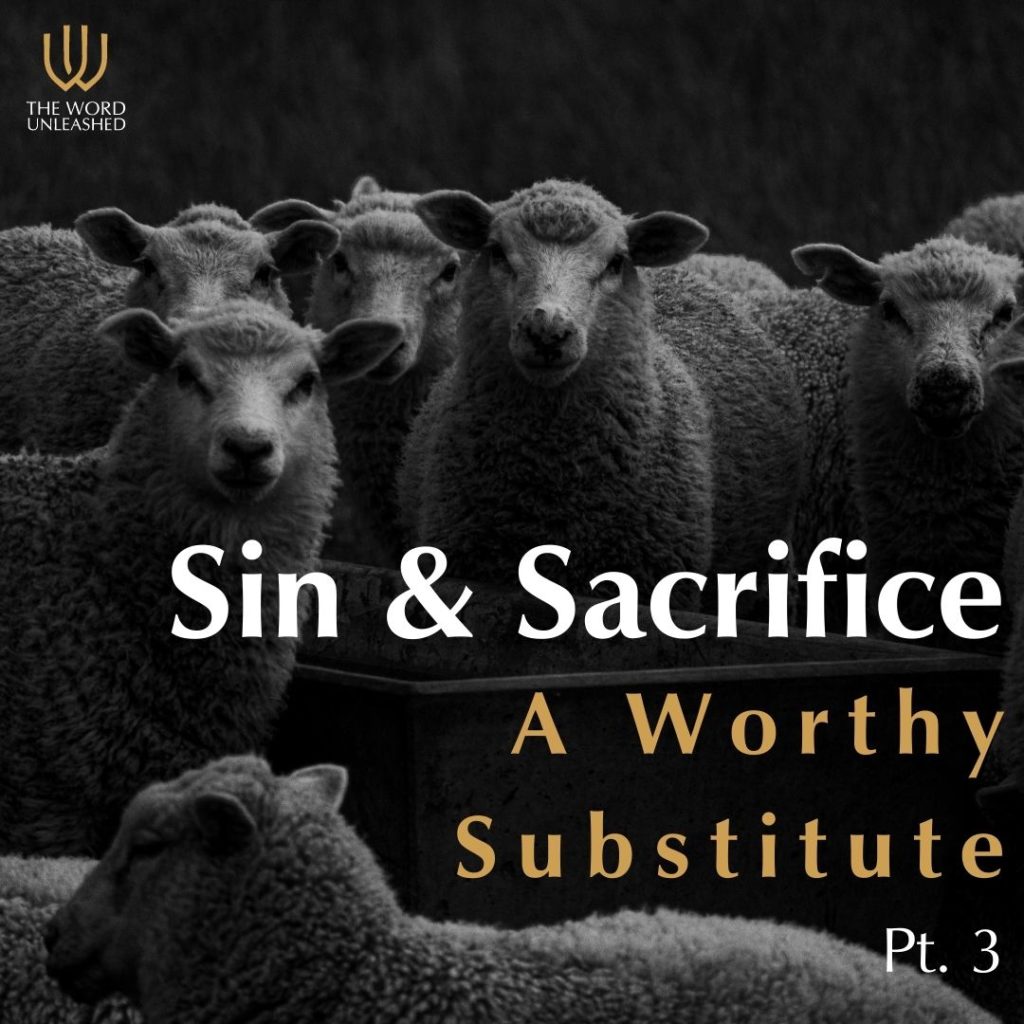
The sacrifices in the Old Testament were like a shadow and were never considered to be the literal image or icon. By way of illustration, your shadow isn’t really you. Instead, it is a vague outline of your human body. In the same way, the sacrificial system in the Old Testament was a shadow not the reality. That’s because the Old Testament sacrifices couldn’t fully satisfy God’s holy and just anger against our sin. The good news, however, is the reality that God’s just anger was satisfied through the sacrificial death of our Lord Jesus Christ.
Hebrews 10:1, “For the Law, since it has only a shadow of the good things to come and not the very form of things, can never, by the same sacrifices which they offer continually year by year, make perfect those who draw near.”
Notice how the author of Hebrews points out that the Old Testament sacrifices could never “make perfect those who draw near.” In other words, those sacrifices could never give us a perfect standing before God and that’s why they were continuously offered. Hebrews 10:2 says, “Otherwise, would they not have ceased to be offered because the worshipers, having once been cleansed, would no longer have had consciousness of sins?” Not only was the Old Testament believer forgiven for their sins, but they also had a sense of forgiveness and complete confidence in it.
So, why would the author of Hebrews mention that they had a “consciousness of sins with them?” It is because Old Testament believers knew their sins had not yet been objectively dealt with as shown in the repetitive nature of the sacrifices. They knew intuitively that an animal’s death simply could not remove sins. Because of this, the consciousness of sins remained with them—they had a lingering sense of guilt because they knew their sin had not yet objectively been paid for. Hebrews 10:3 says, “But in those sacrifices there is a reminder of sins year by year.”
In the Old Testament you’ll discover that the list of sacrifices is exhaustive and exhausting. In fact, if you just take the national sacrifices that had to be offered every year, roughly 1,200 animals were used. If you add to that number all the animals used by individuals, some historians estimate that 200,000 animals were sacrificed every year in Israel during Passover. But it didn’t stop there! Once that year was over the same calendar cycle of sacrifices began again.
What was the Old Testament believer to learn from the fact that he had to continually offer sacrifices? Why was the repetition necessary? Simply put, because animal blood cannot expiate sin; it cannot remove the guilt of sin. Hebrews 10:4 says, “It is impossible for the blood of bulls and goats to take away sin.”
An animal can never be an adequate substitute for a human being made in the image of God. Animal sacrifices were to be a constant reminder for the Old Testament believer that someday there would be a true substitute, not merely a picture or shadow.
R. C. Sproul writes, “The value of those atoning sacrifices in the Old Testament was in the way they dramatized the authentic atonement yet to come. In other words, people were justified by believing in the promise of God, by seeing those rites as shadows of a future reality. They received real atonement only from Christ. In the Old Testament ceremony, the concept of substitution was central.”